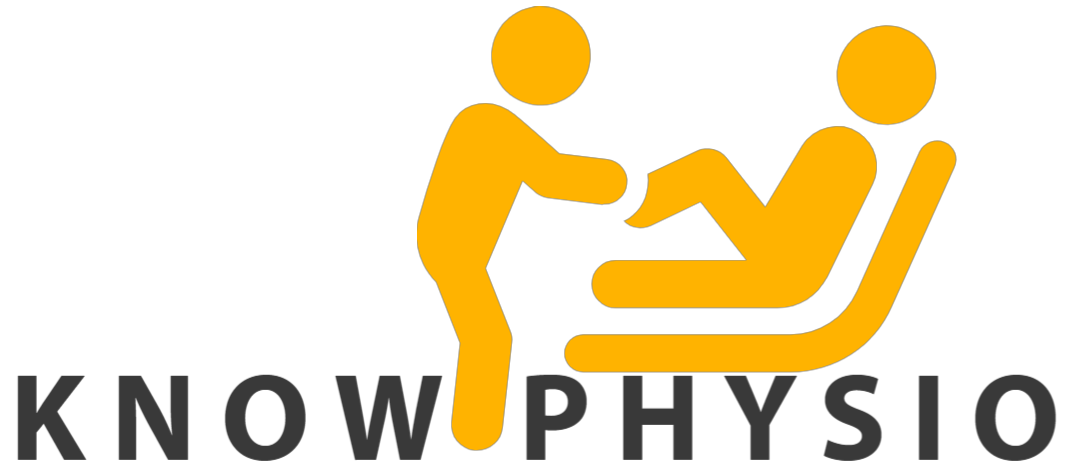Introduction
Whenever the blood flow to the brain is disrupted which will cause brain cells to die ,is the medical emergency. Strokes can have serious and long-lasting effects on a person’s ability to think, speak, and move, and they are a leading cause of death and disability worldwide.
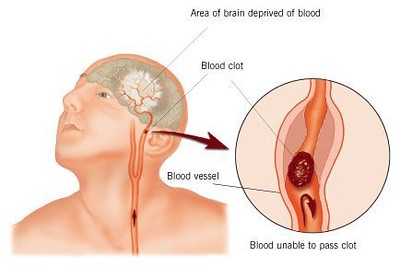
The symptoms of a this include sudden weakness or numbness on one side of the body, difficulty speaking or understanding speech, sudden vision loss, and sudden severe headache. Early recognition and treatment are critical to minimize the damage caused by a stroke and to improve the chances of a full recovery.
Causes
it can be caused by several factors, including:
- Ischemic stroke: This occurs when a blood clot blocks an artery that supplies blood to the brain.
- Hemorrhagic stroke: This occurs when a blood vessel in the brain ruptures, causing bleeding into the brain.
- Transient ischemic attack (TIA): Also known as a “mini-stroke”, TIAs are caused by a temporary disruption in blood flow to the brain.
- Cardiac causes: Conditions such as atrial fibrillation, a heart attack, or a heart valve problem can lead to a stroke.
- Risk factors: High blood pressure, smoking, diabetes, high cholesterol, and a family history of stroke can increase the risk of having a stroke.
- Lifestyle choices: Unhealthy habits like poor diet, physical inactivity, and excessive alcohol consumption can also increase the risk of stroke.
Types of stroke
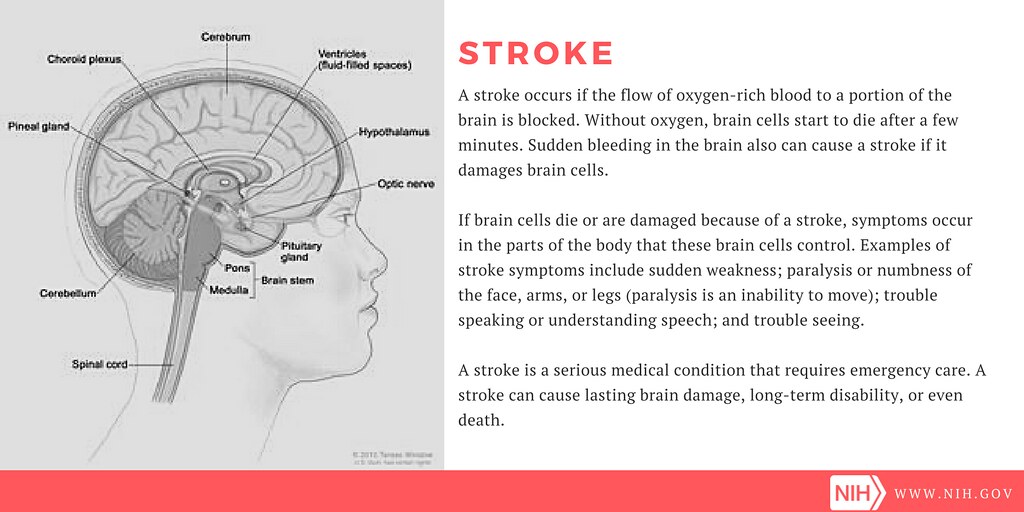
There are two main types of stroke:
Ischemic Stroke:
It is the most common type of stroke and occurs when a blood clot blocks an artery supplying blood to the brain.
Ischemic Stroke is a type of stroke that occurs when a blood clot blocks an artery supplying blood to the brain. This causes a lack of oxygen to the brain, leading to the death of brain cells. Ischemic strokes make up the majority of all strokes and can have a range of symptoms, including sudden weakness or numbness on one side of the body, difficulty speaking or understanding speech, sudden vision loss, and sudden severe headache.
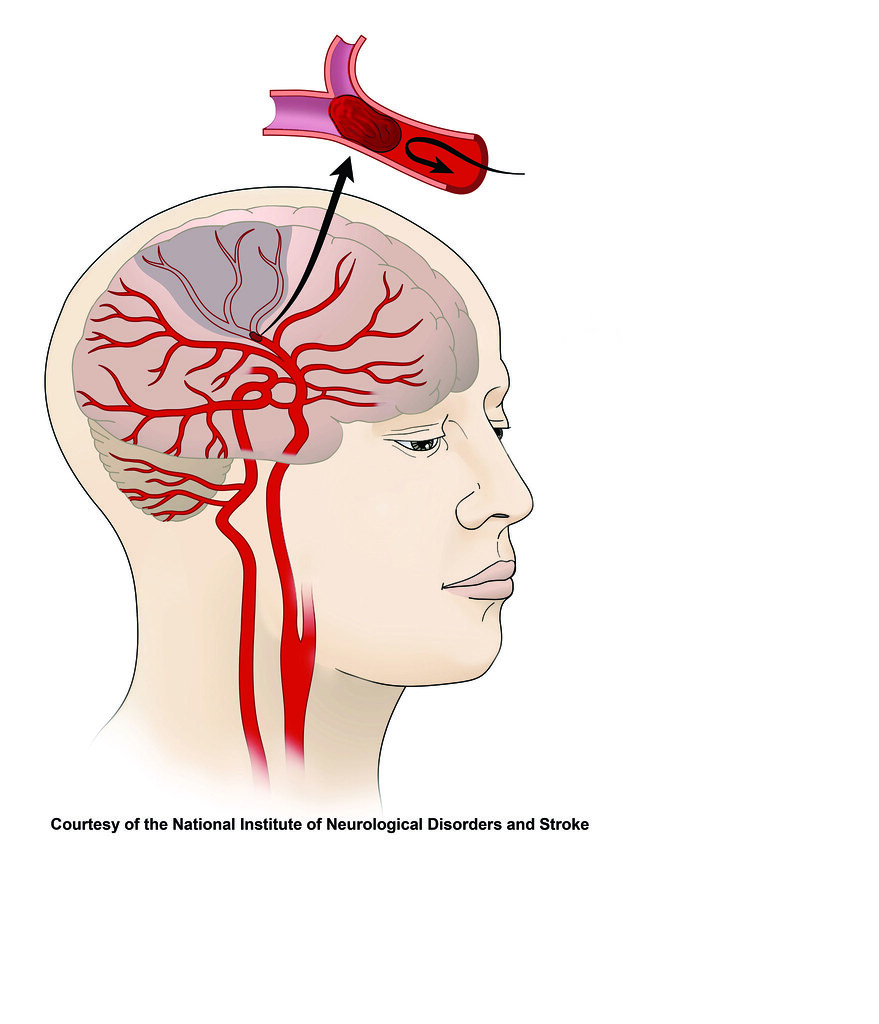
Risk factors for ischemic stroke include high blood pressure, smoking, diabetes, high cholesterol, and a family history of stroke. Some lifestyle choices, such as unhealthy diet, physical inactivity, and excessive alcohol consumption, can also increase the risk of an ischemic stroke.
Treatment for an ischemic stroke may include medications to dissolve the blood clot, surgery to remove the clot, or use of clot-busting drugs. Early recognition and treatment are critical to minimize the damage caused by a stroke and to improve the chances of a full recovery.
Hemorrhagic Stroke:
It occurs when a blood vessel in the brain ruptures and bleeds into the brain.
Hemorrhagic Stroke is a type of stroke that occurs when a blood vessel in the brain ruptures and bleeds into the brain. This bleeding causes a buildup of pressure in the brain, leading to the death of brain cells and serious neurological damage. Hemorrhagic strokes are less common than ischemic strokes but are more likely to be fatal.
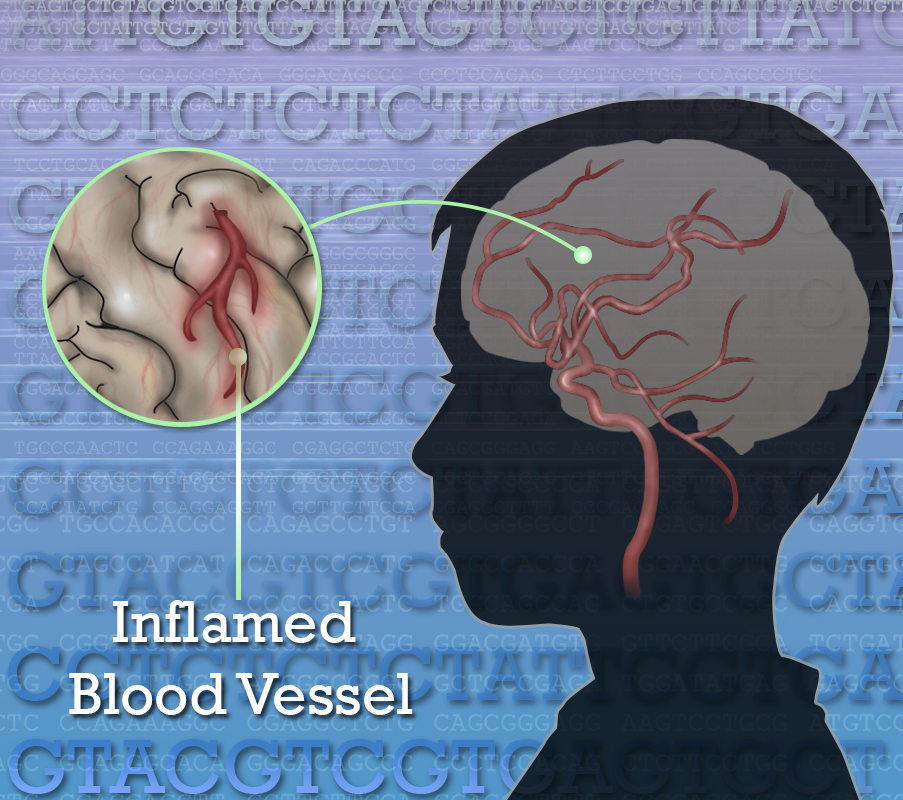
Risk factors for hemorrhagic stroke include high blood pressure, smoking, and use of blood-thinning medications. Some medical conditions, such as an aneurysm or arteriovenous malformation (AVM), can also increase the risk of a hemorrhagic stroke.
Treatment for a hemorrhagic stroke may include medications to control high blood pressure and swelling, surgery to remove the blood and repair the damaged blood vessel, or embolization to block the flow of blood to the ruptured vessel. Early recognition and treatment are critical to minimize the damage caused by a hemorrhagic stroke and to improve the chances of a full recovery.
Additionally, there is a third type of stroke called a Transient Ischemic Attack (TIA), also known as a “mini-stroke”. This occurs when blood flow to the brain is temporarily disrupted and symptoms resolve within a few minutes. TIAs are a warning sign that a more serious stroke may occur in the future.
Symptoms
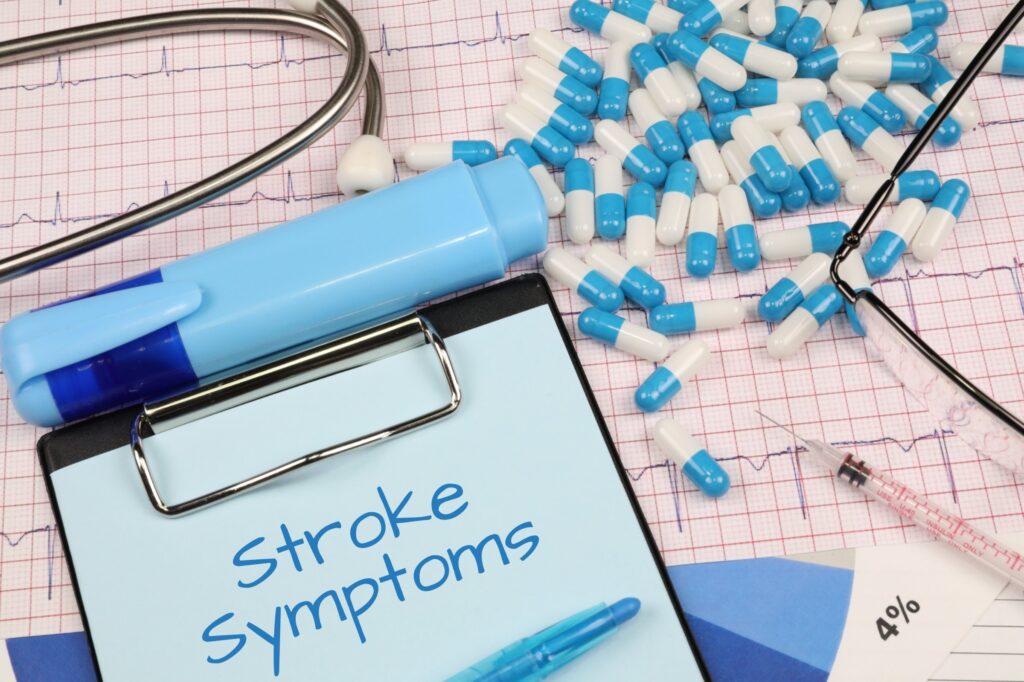
symptom of stroke depends upon type of stroke but some common symptoms of stroke are following :
- Sudden weakness in face , arms and legs and specially on one side of the body.
- Sudden difficulty speaking or understanding speech.
- Loss of vision from eyes
- Sudden dizziness, loss of balance, or coordination.
- Sudden severe headache with no known cause.
- Sudden difficulty swallowing.
It is important to seek medical attention immediately if you or someone you know experiences any of these symptoms, as time is of the essence in treating a stroke. A prompt diagnosis and treatment can minimize the damage caused by a stroke and improve the chances of a full recovery.
Risk factors of Stroke
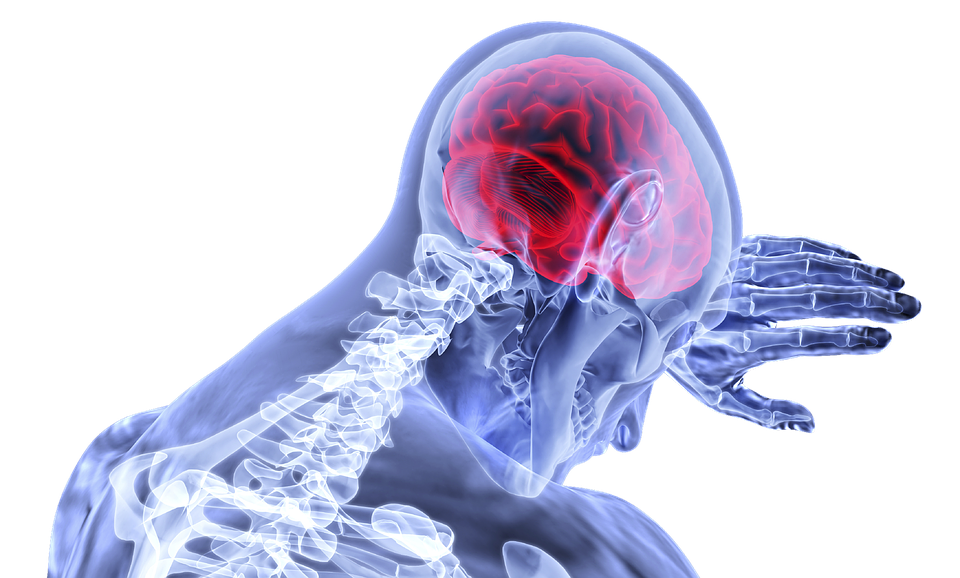
There are several risk factors that increase the likelihood of having a stroke, including:
- High blood pressure: Uncontrolled high blood pressure is a major risk factor for stroke.
- Smoking: Smoking increases the risk of stroke by damaging blood vessels and increasing the likelihood of blood clots.
- Diabetes: People with diabetes are at increased risk of stroke because high blood sugar levels can damage blood vessels.
- High cholesterol: High levels of cholesterol in the blood can increase the risk of stroke by contributing to the formation of blood clots.
- Family history: A family history of stroke increases the risk of having a stroke.
- Age: The risk of stroke increases with age.
- Gender: Stroke is more common in men, but women are more likely to die from stroke.
- Ethnicity: African Americans, Hispanics, and Native Americans are at increased risk of stroke compared to whites.
- Lifestyle choices: Unhealthy habits like poor diet, physical inactivity, and excessive alcohol consumption can also increase the risk of stroke.
It is important to understand and manage these risk factors to reduce the likelihood of having a stroke.
Management options
Effective management of stroke involves prompt recognition of symptoms and prompt medical attention, as well as lifestyle modifications to reduce the risk of future strokes. The following are some of the best practices for managing stroke:
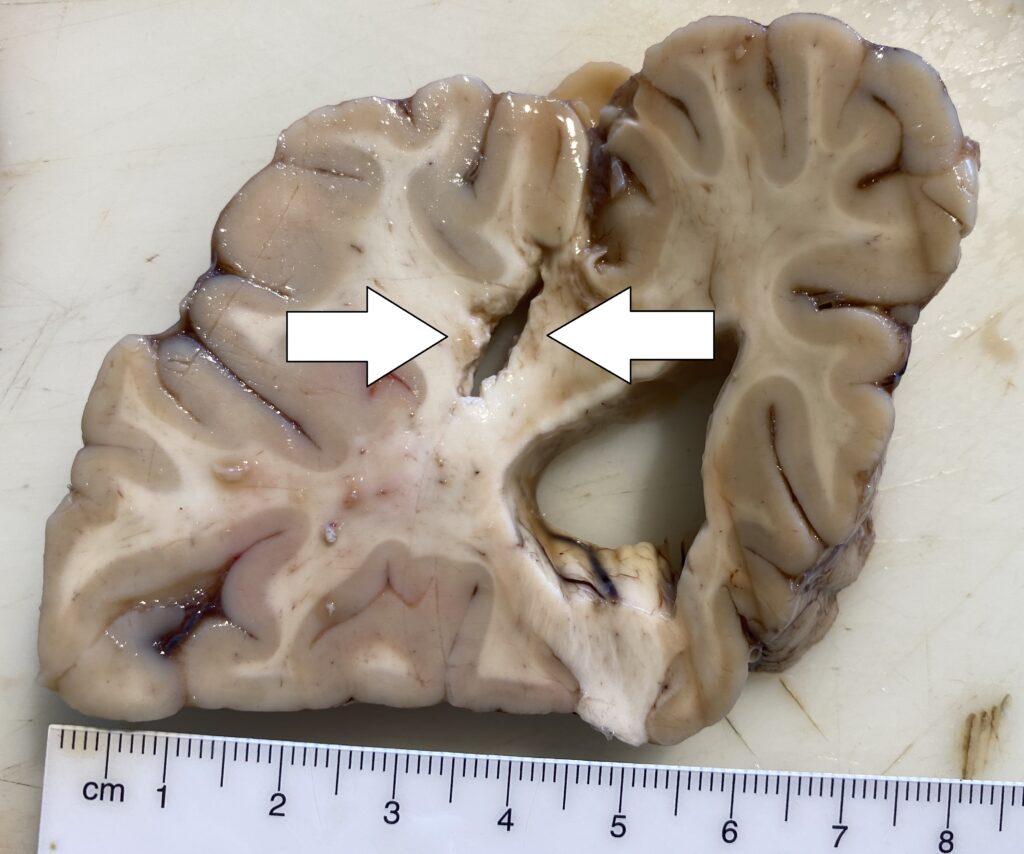
- Early recognition and treatment: Quick recognition of stroke symptoms and prompt medical attention can minimize the damage caused by a stroke and improve the chances of a full recovery.
- Lifestyle changes: Making healthy lifestyle choices, such as eating a healthy diet, exercising regularly, quitting smoking, and managing stress, can reduce the risk of future strokes.
- Blood pressure control: Maintaining a healthy blood pressure level is critical for reducing the risk of stroke.
- Blood sugar control: Managing diabetes and maintaining healthy blood sugar levels can reduce the risk of stroke.
- Cholesterol management: Maintaining healthy cholesterol levels through diet, exercise, and medications can reduce the risk of stroke.
- Aspirin therapy: In some cases, aspirin therapy may be prescribed to reduce the risk of stroke.
- Surgery or other procedures: In some cases, surgery or other procedures may be necessary to remove blood clots or repair damaged blood vessels.
It is important to work closely with a healthcare professional to develop a personalized plan for managing stroke and reducing the risk of future strokes.
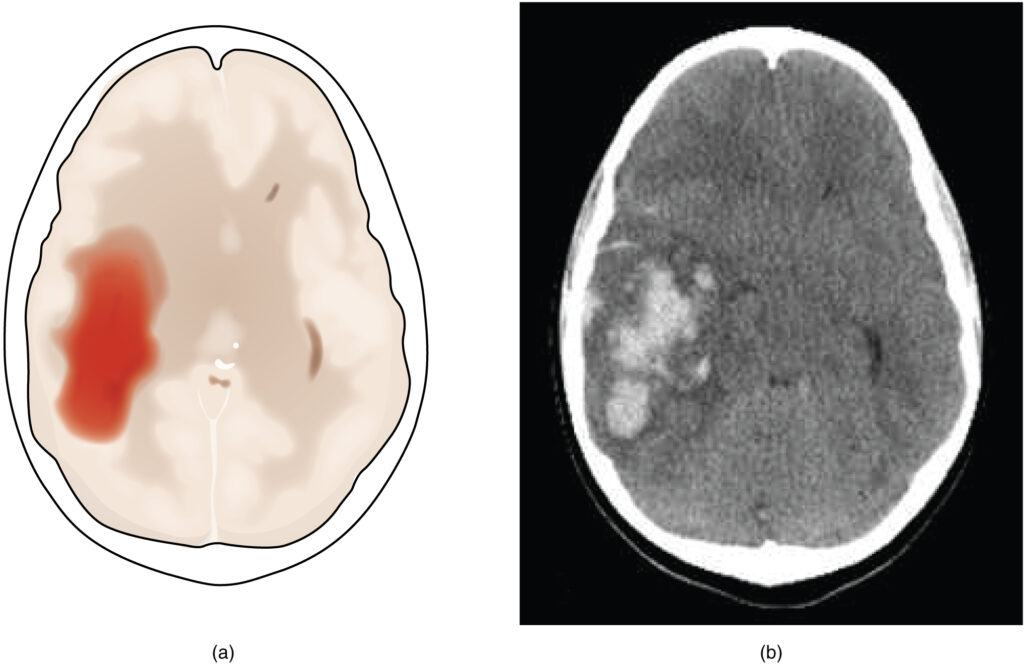
FAST is an acronym used to help recognize the symptoms of a stroke and respond quickly. FAST stands for:
- Face drooping: Ask the person to smile and look for any weakness or drooping on one side of the face.
- Arm weakness: Ask the person to raise both arms and look for any weakness or difficulty with one arm.
- Speech difficulty: Ask the person to repeat a simple phrase and listen for any slurring or difficulty speaking.
- Time to call emergency services: If any of the above symptoms are present, it is time to call emergency services.
Recognizing the symptoms of a stroke and responding quickly is critical to minimizing the damage caused by a stroke and improving the chances of a full recovery. It is important to remember the FAST acronym and seek medical attention immediately if a stroke is suspected.
Treatment
Treatment for stroke depends on the type and severity of the stroke, as well as the individual’s age, overall health, and medical history. Some common treatments for stroke include:
- Medications: Thrombolytic drugs, such as tissue plasminogen activator (tPA), can dissolve blood clots and improve blood flow to the brain. Antiplatelet and anticoagulant drugs can also help prevent blood clots and lower the risk of recurrent stroke.
- Surgery: In some cases, surgical procedures such as endovascular thrombectomy or carotid endarterectomy may be necessary to remove blood clots and improve blood flow to the brain.
- Rehabilitation: Physical, occupational, and speech therapy can help individuals recover from stroke-related disabilities and improve their ability to perform daily activities.
- Lifestyle changes: Making healthy lifestyle changes, such as maintaining a healthy diet, exercising regularly, quitting smoking, and controlling medical conditions, can help prevent recurrent stroke and improve overall health.
- Support: Joining a support group, receiving counseling, and seeking help from a rehabilitation specialist can help individuals and their families cope with the physical and emotional impact of stroke.
It is important to seek prompt medical attention if stroke symptoms occur, as time is a critical factor in treating stroke and reducing its impact. A doctor can provide a personalized treatment plan and work with the individual to determine the best course of action.
Prevention
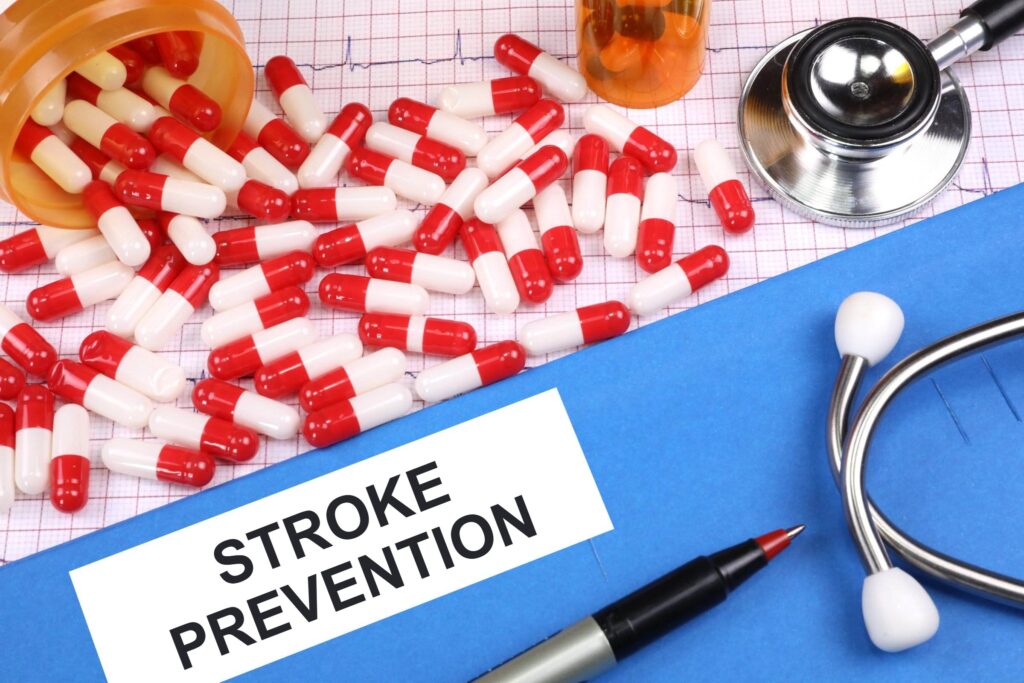
There are several lifestyle changes and medical interventions that can help prevent stroke:
- Maintain a healthy diet: Eating a diet rich in fruits, vegetables, whole grains, and lean proteins can help control cholesterol, blood pressure, and weight.
- Exercise regularly: Physical activity can lower blood pressure, improve circulation, and reduce the risk of stroke.
- Quit smoking: Smoking increases the risk of stroke and other cardiovascular diseases.
- Limit alcohol consumption: Excessive alcohol intake can increase blood pressure and lead to stroke.
- Control medical conditions: Treating and managing conditions such as high blood pressure, diabetes, and atrial fibrillation can help reduce the risk of stroke.
- Monitor blood pressure: High blood pressure is a major risk factor for stroke. Regular monitoring and treatment can help prevent stroke.
- Take prescribed medications: Taking prescribed medications, such as antiplatelets or anticoagulants, can help prevent blood clots and lower the risk of stroke.
It’s important to work with a doctor to develop a personalized prevention plan that takes into account individual risk factors and medical history.
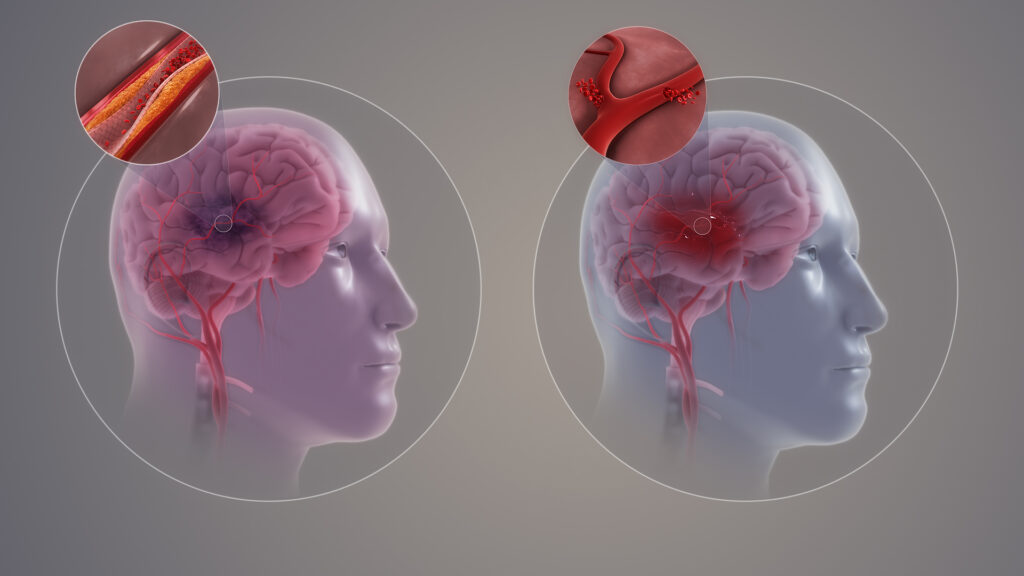
Medications
Some common medications used in stroke treatment include:
-Tissue plasminogen activator (tPA)
-Antiplatelet drugs (Aspirin, Clopidogrel)
-Anticoagulants (Warfarin, heparin)
-Statin drugs (Atorvastatin, Rosuvastatin)
-Blood pressure-lowering medications (Angiotensin-converting enzyme inhibitors, Calcium channel blockers)
-Neuroprotective agents
Consult with a doctor to determine the best treatment plan for a specific stroke case.
